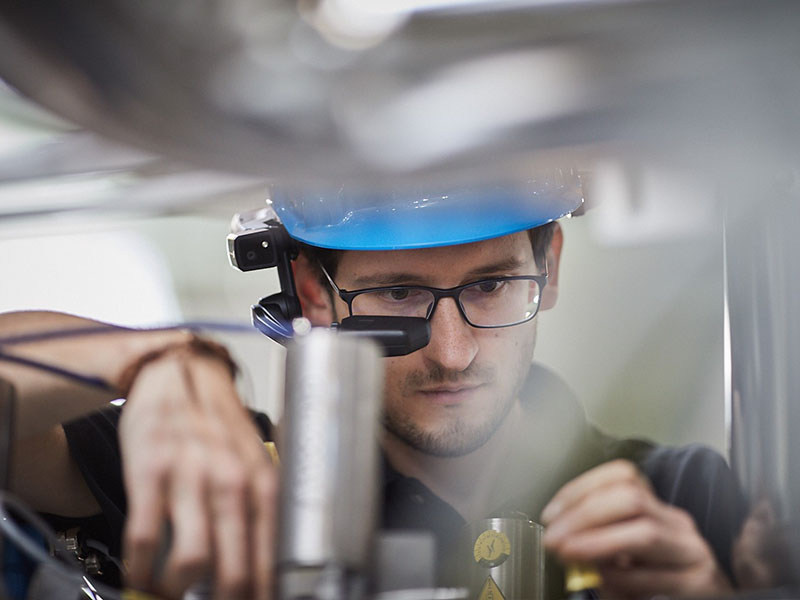HOW WEARABLE TECHNOLOGY SUPPORTS YOUR ORGANISATION'S ESG


Wearable technology facilitates organizations’ environmental, social, and governance (ESG) efforts in many ways. So, let’s dig into ESG in the context of wearable technology.
Overview to ESG
ESG is Environmental, Social, and Governance. It is a framework investor, corporations, and other stakeholders use to evaluate a company’s performance and impact in these three key areas.
Environmental factors refer to the impact on the planet, including climate change, carbon footprint, deforestation, and resource depletion.
Social factors relate to the impact on society, including employment laws, occupational health and safety, human rights, and diversity and inclusion.
Governance factors refer to an organization’s management and oversight, including board composition, compensation, transparency, and ethical regulations.
ESG considerations are becoming increasingly important for investors as they seek to align their investments with their values and support companies in taking steps to address these issues. Organizations that integrate ESG metrics also witness improved brand reputation and access to capital.
Consumers are also increasingly becoming conscious of ESG factors while making purchase decisions. Resultantly, companies are increasingly implementing ESG principles into their business strategies.
Investing in wearable technology can support an organization’s Environmental, Social, and Governance (ESG) efforts in several ways:
Environmental:
Wearable technology can help organizations reduce their carbon footprint by improving energy efficiency and reducing waste. For example, wearable headsets or glasses can connect one worker on-site to multiple subject matter experts. Hence, saving on travel emissions.
Social:
Wearable technology can improve employee well-being and safety by keeping their hands free, connecting them with the knowledge they need, and providing alerts for potential hazards. It also minimizes the risk of workplace injuries, resulting in a decline in absenteeism rates.
Governance:
The technology also improves control and governance by providing real-time data on workers’ performance. It allows organizations to maintain a transparent and honest culture and enable workers to meet ethical standards.
Wearable technology also improves a brand’s reputation and its ability to retain talent. However, it’s important to note that adopting wearable technology should be done responsibly and with consideration for privacy and data security. Organizations should have precise data collection, storage, and use policies and ensure employees know these policies and their rights.
Now, let’s review a few details about what role VR (Virtual Reality) plays in Environmental, Social, and Governance efforts.
VR technology has several applications in other consumer markets that can help support sustainable development in various ways. Here are some examples:
- Environmental Awareness: This technology can raise awareness about environmental issues by immersing users in realistic simulations of affected environments.
- Sustainable Urban Planning: VR also allows stakeholders to assess the impact of different design choices on environmental and social dimensions.
- Sustainable Tourism: The technology also allows immersive travel experiences. It does not only reduce carbon emissions associated with traveling, but it also allows individuals to experience different cultures.
- Green Energy Education: VR also allows educational opportunities to spread awareness of renewable energy sources and promote a sustainable economy.
Moving onto AR – Augmented Reality has also proven to be a highly effective tool for ESG.
Augmented reality (AR) technology maximizes sustainable development in several ways:
- Education: Augmented reality provides an immersive experience to educate people about all three sustainability pillars – social, environmental, and economic.
- Sustainable Product Design: The technology provides simulations of product design and assesses the environmental and social impact of different industrial processes.
- Green Building: AR visualizes building designs, allowing architects and builders to identify environmental impacts and curate targeted solutions.
- Recycling: AR identifies and categorizes recyclable materials, making recycling more efficient. For instance, augmented reality is able to recognize plastic types and provide a recycling guide accordingly.
- Sustainable Consumption: AR also allows consumers to make sustainable choices by providing information on the environmental and social impacts of business offerings.
Enough theory. Now let’s look at some proven examples of how wearable technology is helping organizations go green; and the critical role that Realwear plays in helping them.
Case in point: Travel & its environmental impact.
Did you know? A person on a 4000 km flight can produce 400 kg of carbon emissions.
According to the International Air Transport Association (IATA), the global aviation industry accounted for 2.4% of all carbon emissions in 2019. It is expected to increase as air travel becomes widespread, particularly in developing countries.
Some time back, Goodyear, one of Realwear’s customers, shared how the Realwear HMT-1 revolutionized its inspection system. To quote Taylor Davis, an electrical engineer at Goodyear:
“I was always in-person to solve a problem…always. I thought that you had to meet in person with someone else in the process development center, or I had to travel to one of my plants or to a vendor to get anything done. We’re talking days to months of travel. Then the pandemic hit, and we had to adapt.
If a machine breaks, I don’t know how to fix it, and my person of expertise is remote somewhere; I can now use RealWear within minutes to get online with them and show them what I’m seeing.”
You can watch the Goodyear x Realwear collaboration here. It is an excellent example of how wearable technology provides innovative & sustainable solutions to modern-day problems.
In short, wearable technology acquires enough potential to revolutionize your organization’s ESG progress. The proper measures taken at the right time can help your workplaces save thousands of dollars, as well as time & physical effort.
The possibilities are endless with Augmented Reality, VR, & the innovative solutions we offer in the form of wearable technology. It’s time to up your Social, Environmental & Governance game; and wearable technology is here to help you do that.
To learn more: Get in touch with us today.

